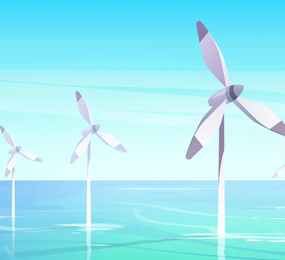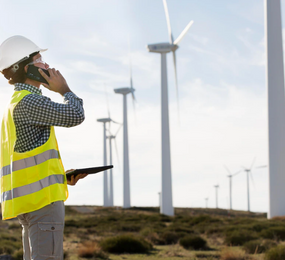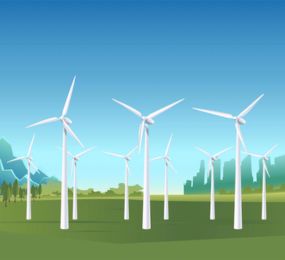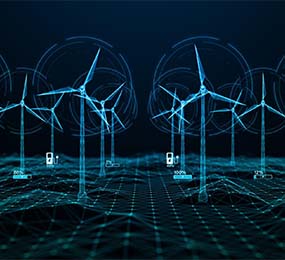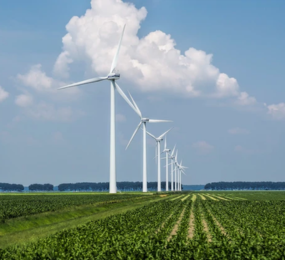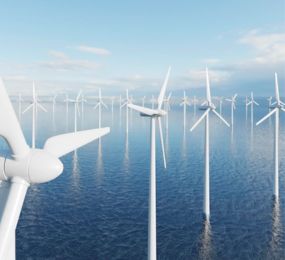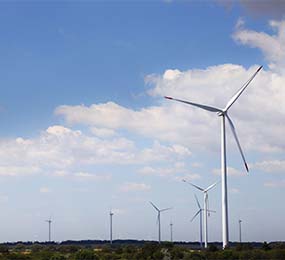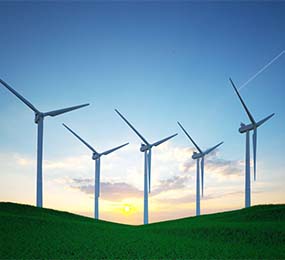In the quest for sustainable and environmentally friendly solutions, innovation knows no bounds. A fascinating concept that has emerged in recent years is the idea of a "wind fertilizer." This innovative approach combines wind energy generation with sustainable agriculture, offering a unique solution that benefits both sectors. In this article, we explore the concept of wind fertilizer, its potential benefits, and how it contributes to a greener future.
Wind energy has long been recognized as a clean and renewable source of power. Wind turbines convert the kinetic energy of the wind into electricity, providing a sustainable alternative to fossil fuels. With advancements in technology, wind farms have become more efficient and widely deployed worldwide. But what if wind energy could do more than just generate electricity?
Wind fertilizer, also known as "wind-driven nutrient deposition," is a concept that utilizes wind power to distribute natural fertilizers across agricultural fields. The idea is to combine wind energy generation with the release of nutrients from natural sources, such as seaweed, algae, or other organic materials, onto farmland. This process harnesses the strong wind currents present in certain regions to disperse the fertilizing particles across crops.
Benefits of Wind Fertilizer
1. Sustainable Agriculture: Wind fertilizer promotes sustainable farming practices by utilizing natural fertilizers instead of synthetic chemicals. This approach reduces the environmental impact of agriculture, minimizes pollution, and preserves soil health.
2. Renewable Energy Integration: By combining wind energy generation with agricultural practices, wind fertilizer maximizes the use of renewable resources, creating a symbiotic relationship between the two sectors.
3. Cost-Effectiveness: Wind fertilizer offers potential cost savings for farmers by reducing the need for synthetic fertilizers and associated transportation costs. It can also help improve crop yields, leading to increased productivity and profitability.
4. Nutrient Distribution: The use of wind currents ensures the even distribution of nutrients across agricultural fields, reducing the risk of over-fertilization in certain areas and optimizing plant growth.
5. Carbon Sequestration: Wind fertilizer contributes to carbon sequestration by promoting healthy plant growth. As plants absorb carbon dioxide during photosynthesis, this process helps mitigate climate change by reducing greenhouse gas emissions.
Challenges and Considerations
While the concept of wind fertilizer holds promise, there are challenges and considerations to address:
1. Regional Suitability: Wind fertilizer is most effective in regions with consistent and strong wind currents. Evaluating the suitability of a particular area for wind fertilizer requires an understanding of local wind patterns and agricultural practices.
2. Nutrient Selection and Balance: Determining the appropriate nutrients and their optimal ratios for specific crops is crucial to avoid nutrient imbalances and ensure healthy plant growth. Proper research and analysis are necessary to identify the most effective natural fertilizers for different agricultural contexts.
3. Environmental Impact Assessment: Assessing the potential environmental impact of wind fertilizer, such as nutrient runoff and effects on local ecosystems, is essential to ensure the sustainability and long-term viability of this approach.
4. Regulatory and Policy Frameworks: Establishing regulatory frameworks and guidelines for wind fertilizer implementation can help ensure responsible practices and address any potential concerns related to land use, environmental protection, and public health.
Further research, pilot projects, and collaboration between the wind energy and agriculture sectors are necessary to explore the viability and scalability of wind fertilizer. This includes investigating the most suitable sources of natural fertilizers, optimizing dispersal methods, and conducting comprehensive environmental assessments.
Wind fertilizer represents an innovative approach that combines the benefits of wind energy generation with sustainable agriculture. By leveraging wind power to disperse natural fertilizers, this concept offers a unique solution that promotes environmental stewardship, renewable energy integration, and sustainable food production. As we continue to explore and refine this idea, wind fertilizer has the potential to shape a greener future where clean energy and agriculture work hand in hand.
https://youtu.be/u1VmTh536Yg, delve deeper into the concept of wind fertilizer and its potential impact.
To register or learn more about the Forum please check here: https://bit.ly/430gLPP
For more information and group participation, contact us: [email protected]


